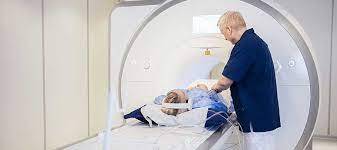What’s the Difference between an X-ray, CT scan, and MRI?
To get a more precise diagnosis, clinicians often employ diagnostic imaging techniques to rule out probable sources of pain or illness. The various diagnostic imaging methods include X-rays, CT scan in Dallas, and MRI, to name a few. The kind of imaging employed depends on the portion of the body that the medic wants to be seen.
Why are X-rays, CT scans, and MRIs different from one another?
X-Rays
Radiation-based X-rays are used to yield pictures of the human body. The movie makes solid substances like bones seem white when the light passes over the body. Examining and diagnosing malignancies, infections, fractures, degeneration, and bone diseases often include using X-rays.
Although it’s often used to investigate skeletal characteristics, an X-ray may look at inside tissues, like organs.
X-ray equipment and the photographic film will be placed between the body part being imaged during an X-ray. The patient’s internal organs then reflect electromagnetic waves (radiation) as they pass through the body, which causes images to emerge on the exposed film.
Although X-ray radiation is not measured as dangerous, medics will take extra protection if the patient expects it.
CT scan in Dallas
Both a calculated tomography scan and an MRI provide detailed images of the body. The more sophisticated and potent CT scan provides a 360-degree picture of the vertebrae, spine, and internal organs. Distinction dyes are often inoculated into the blood to increase the perceptibility of physiological assemblies on the CT scan in Dallas.
A CT scanner gazes like a massive container with a tube in the middle. The technician doing the scan sits in a different area with supercomputers where the pictures are shown. The technician uses speakers and microphones to speak with the patient.
CT scan services in Dallas may or may not be available in small or rural hospitals and is more expensive than an X-ray.
MRI
Magnetic resonance imaging, or MRI, uses a great magnet and radio waves to make highly accurate cross-section pictures of the body’s bones and accessible tissues. MRI, which utilizes no radiation in contrast to X-rays and CT scans, is often used to detect disc herniations, torn ligaments, and bone and joint problems.
Through an MRI scan, the patient deceits immobile on a bench that glides into the tube-shaped chamber of the MRI apparatus. The device creates a magnetic field around the patient, and radio waves are pulsed into the body area that needs to be scanned. These vibrations are converted into detailed 2D visuals captured by specialized computer software.
Not all hospitals have access to MRI scanners. If your medic has recommended an MRI, you may require to travel to a particular imaging focus for your scan.
What Are the Differences Between CT scans in Dallas and X-Ray Technology?
Doctors utilize X-rays to detect cancer, pneumonia, fractures, and bone dislocations. However, doctors may use a sophisticated x-ray device called a CT scan to identify internal organ issues using a computer and x-ray images of the structure.
It is possible to find problems with injured muscles, soft tissues, or other vital organs using the affordable CT scan services in Dallas that X-ray scanners often miss. X-ray images are in 2D, whereas CT scan images are in 3D. The CT scanning machine revolves on an axis while taking many 2D pictures of the human body from various perspectives. The computer will then compile all the cross-sectional images into a single display, generating a 3D representation of the body’s interior, enabling the doctor to determine if an injury or sickness is present.
What Sets a CT Scan Apart from an MRI?
An MRI scan doesn’t operate in this manner, however. The magnetic field utilized by the MRI aligns every proton in your body. These protons get brief radio wave bursts that carry a signal that the MRI scanner picks up. After the computer has analyzed this signal, a 3D image of the body components under investigation is created.
Medical experts also use MRIs and CT scan in Dallas for several uses. A CT scan helps assess severe chest, head, spine, or abdomen injuries, particularly fractures. They are also beneficial in figuring out where and how big tumors are.
An MRI may often provide a more precise diagnosis of anomalies in the joints, soft tissues, ligaments, and tendons. Doctors often recommend an MRI to examine the neck, spine, breasts, muscles, and body. They are an excellent resource for evaluating spinal ligaments.
What Sets an MRI Apart from an X-Ray?
You are subjected to ionizing radiation through X-rays, as was previously mentioned. MRI machines do not produce this radiation. X-rays are rapid and only take a few minutes, in contrast to MRIs, which might take up to two hours, depending on what the doctor is looking for.
X-rays can only be used to scan for a small number of physical disorders. Clinicians use MRIs because they are more flexible in assessing various medical situations. For example, x-rays are often used to inspect broken bones but may also be used to detect unhealthy tissue. MRIs are preferred for evaluating soft tissues, such as brain tumors, spinal cord injuries, and damage to ligaments and tendons.




